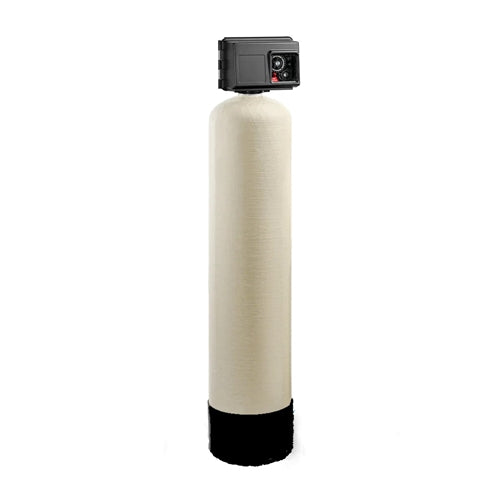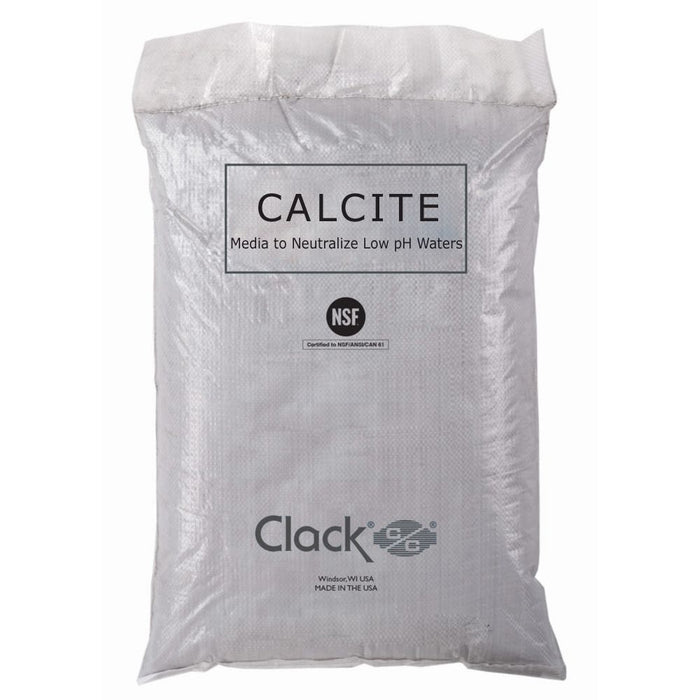Solve your acid water problems by installing a Calcite filter. Calcite, otherwise known as limestone or calcium or water hardness, will sacrificially dissolve, raising the pH and your hardness 3 to 5 grains.
pH at 7.0 or below will not allow an iron filter or water softener to effectively remove the iron from your well.
Calcite is to be applied on well water testing at a pH between 5.5 and 7.0 and of water hardness of 10 grains or below. Hardness of above 10 grains will require a feed pump system and tank to inject a mixture of soda ash and water into your water supply for pH adjustment
Know your well flow rate before ordering any backwashing filter >> Well Flow Rate







